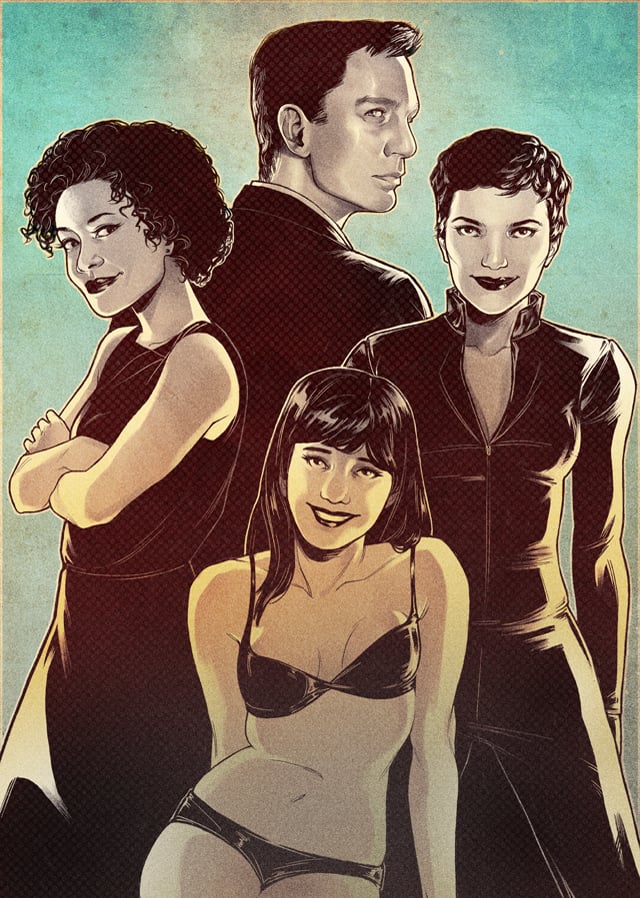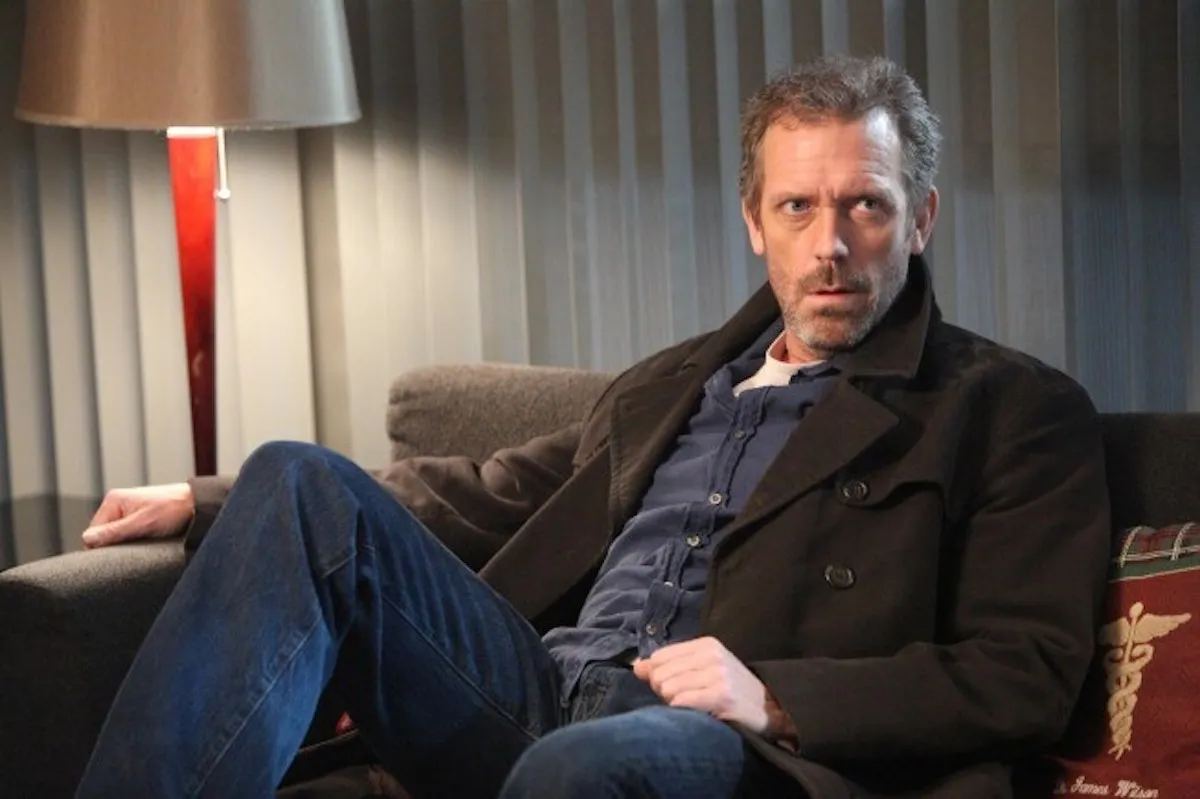Never Say Never Again feels like an end.
Not to the Bond franchise of course because we’re barely halfway through the official movies, but to Sean Connery’s take on the character that swaggered onto the screen and stole (some of) our hearts in Dr. No. This movie shines on an older James Bond, a man perhaps just out of his prime but still no one to screw around with.
This movie comes out of the Thunderball lawsuit back in the sixties. I mention it a little bit in my review for Thunderball, but essentially, due to Fleming’s inability to give credit where credit was due, Kevin McClory received some rights to Thunderball and many of the ideas in the original book. Almost twenty years after the Eon Production film, McClory worked with Warner Brothers and Taliafilm to release his version of Thunderball with Connery at the lead – despite how Connery said before that he’d never play Bond again.
Never Say Never Again and Thunderball are basically the same movie but with Bond at different stages of his life. While the basic plot – SPECTRE stealing missiles and holding the world hostage with threats of using the missiles on undisclosed locations – is the same, much of the film’s plot is different from the 1965 film.
When Bond goes to the clinic in Thunderball, it’s to rest between missions and deal with a new injury. In Never Say Never Again, it’s because he’s slow to react and an aging superspy is as good as dead.
Felix Leiter shows up and is played by former football player Bernie Casey, who got the part because Sean Connery and the producers thought that the way to make a memorable character in Leiter was to change his race. Even though he doesn’t get a large amount of screen time, Casey’s portrayal in the film is seen as one of the best versions of Leiter to this day.
Domino and her brother have a different relationship in this film. Actually, Domino’s characterization is meeker for much of the movie and she reads as an innocent for much of the film. Played by Kim Basinger in one of her earlier starring roles, Largo’s younger girlfriend in this, not his mistress. Where Thunderball‘s Domino is world-weary and aware from the start that Largo is a creep, this one happens to find that out when he threatens her out of the blue during what had been a relatively cute scene.
Even our main villainess gets a reworking with Fiona Volpe winding up replaced by Barbara Carrera’s sadistic Fatima Blush.
Never Say Never Again is just close enough to Eon’s Thunderball that there are parts that move from familiar to a bit boring, but there were more than enough unfamiliar scenes with McClory’s take on the characters to entertain me.
What’s interesting for me about this film is that despite knowing the plot by heart thanks to Thunderball‘s original film, I still wound up surprised by parts of the movie and entertained throughout. While many of the same annoying or upsetting factors that I found in Thunderball were present in this movie, I found myself even more invested in the plot and the characters than I thought I would be.
At the start of Never Say Never Again, a graying and visibly aged James Bond makes his way through a South American encampment on his mission to rescue a woman. It’s framed like the real deal, one of the usual missions that Bond goes on in the pre-credits scenes of Eon films. However, there are two major differences. First, it’s actually a training mission or evaluation of James Bond’s skills and second, he doesn’t come out on top. Bond’s focus on (and seeming weakness for) women gets him (fake)stabbed in the side by the very woman he had rushed to rescue.
It’s all seen as sign that maybe Britain’s greatest agent is getting on in years.
The message in this film’s beginning is that spies are starting to become obsolete in the way that George Lazenby cited in his reasoning for only doing the one Bond film. James Bond and the other 00’s are stuck in teaching positions and desk jobs thanks to the current M. For a man once known for his skill at espionage and kicking butt, being placed largely in a supervisory role and then getting told that his skills aren’t up to snuff must be an incredible blow to Bond’s ego.
One good thing about Connery taking up the Bond role one last time in his fifties is that in the twelve years between his last Bond film and this one, he’s strengthened his acting ability. He emotes more than he used to and it seems sincere instead of pasted on. For me, Connery’s acting ability only improved as he got older.
The current M is this anal little man, focused on fixing Bond and kind of treating him more like a foreign car in need of a tune up than a human being. Off the bat, I didn’t like him. My favorite M will always be Dame Judi Dench and this guy falls so far from that level of awesomeness that there was no hope that I’d love him.
He literally sends Bond off to rehab.
Here’s the thing with this set up though, Bond actually needs the rehab in this plot. In his fifties, he’s cracking under the pressure of being a spy for most of his life. He’s creaking, aching, and generally not in the best of shape. Rehab, however humiliating for Bond, is a good thing and not just because it gets us to the next part of the plot and some of the most interesting characters to show up in a Bond film.
Fiona Volpe was the best character in Thunderball for me. Her counterpart in this film isn’t as captivating in some aspects but I really have to love evil women that love their jobs. Fatima Blush goes gleefully into villainy, killing because she can and leaving broken people behind her. I do like it when women in action films get to go off the rails and be worst of the worse because when done right, it subverts the perceptions of women in action films.
Fatima Blush actually fascinates me as a character because she goes from this fierce villainess to someone ready to burst into a tantrum because Bond won’t say that she was the best lover he’s ever had. It’s such a glitch in the writing for me. It feels like they were heading in the right direction at first, developing her more as a giddy murderess but then the tone of her character changed and she became fixated on Bond.
I don’t like that switch.
Obviously, they couldn’t crib everything from Thunderball, but was it too much to ask that some of Fiona Volpe’s characterization stay true? She gave the best call out towards Bond about how he expects all women to give in once he sleeps with them and shift sides. She’s cutting and cruel with her words, laughing as if the thought of becoming obsessed with this mediocre male lover is the funniest thing in the world.
Getting Carerra’s Blush and seeing her turn to a preoccupation with being Bond’s best was not only jarring when compared with her Eon Productions counterpart, but it was just something out of left field. This is because while the character bounces around in terms of moods, nothing led us to believe that she wanted anything more to do with James Bond than what it took to subdue and then kill him.
This is a far cry from the woman that danced everywhere and was about to cry from joy when Largo told her that he’d probably have her kill Domino later. It’s an incredible change from the woman who strutted into SPECTRE headquarters drenched in fur and with a cold look on her face.
And of course, Blush dies during her confrontation with Bond. She’s so angry that he’s spurned her and is making a joke out of her skill and passion as a lover that she aims to shoot at him. Unfortunately for her, Bond is armed with a pen with an explosive cartridge (courtesy of this film’s Q) and that ends about as well as you expect.
With the character of Domino, I have negative and positive reactions to her character.
First, let’s talk about the positive.
Reworking Domino and fitting her with a younger Largo changes the dynamic of their relationship. It’s still moderately sleazy, but I don’t get the gross relationship dynamics coming across the way they did in Thunderball. It’s not a healthy relationship by any means – he’s still in a position of power over her and manipulates her throughout the film – but the main aspect that squicked me the most about their relationship is largely a non-issue.
Domino receives more depth in the film. She’s fleshed out so that we can see that she has hopes and dreams. She’s a dancer and talented at her craft. She loves her brother (who is implied to be her main protector in the absence of their parents) and she turns on Largo the second that she realizes what he’s done.
However, the reworking brings us to more issues.
While Largo has been aged down, James Bond is even older. Domino is seen to be in her 20s while James Bond is well… old. Way too old for her and everyone watching knows it. And so, in Connery’s last Bond film, we get the same sort of age difference that I hated in his first Bond film when he was going after Honey who was definitely too young for him.
It’s not a nice feeling.
You know what else is terrible about this film and how Domino’s portrayal kind of sucks?
At one point, Largo straight up sells her to Arab men because she’s “betrayed” him and he is a huge jerk on top of that. So we get this gross thing where a woman is on auction (literally chained to a post and assaulted during the process) with a heaping helping of racism because of stereotypes and junk about white slavery. There are so many issues with this scene and they all revolve around misogyny, imperialism, and British anti-Arab sentiment that has settled in deep.
This isn’t specifically about her character but about how even in what is almost a sterling example of the action genre done right, has this massive mess of racism just out of nowhere. Largo doesn’t just try to kill Domino. He sells her because she’s a woman and property to him.
And of course James Bond has to rescue her from characters framed as clumsy, savage, and desperate for a taste or touch of white American flesh.
(The only good thing about this whole mess of a scene is when Bond leaps into the ocean on the back of a horse and the special effects were just atrocious. It’s a horrible thing to laugh at, but it’s the only thing that made the scene work for me.)
This is in the 80s.
What outdated history books were they reading to flesh this part out at any part of the creative process? (Or were they just sticking with Harlequin sheikh novels to get the background?) It was just weird and offensive, like the pulled a scene straight out of one of those misguided romance novels and ran with it. (Seriously, the SPECTRE scheme ongoing through the entire movie is called ‘The Tears of Allah’)
Speaking of SPECTRE —
Never Say Never Again gives us a glimpse of SPECTRE in a new form.
In the Eon films, the organization comes off as kind of HYDRA-lite in function and form, but I actually like this film’s take on the agents and the organization itself. There are women in the group who aren’t henchwomen or eye-candy and people of color in power. They’re still an organization responsible for chaos worldwide and the deaths of people as they incited revolutions, coup d’états, and get their fingers in every pie, but I kind of dig that they basically are evil because they can be
I’m easy to please when it comes to these films and so the little things really do click for me. Despite the rough parts, Never Say Never Again is an amazingly detailed part of the Bond franchise. Even though it’s technically an unofficial entry because it doesn’t fall under Eon Production’s wide umbrella, the film is fun enough. It’s brighter than Eon’s take on the book and the director’s style is fresh enough that it earned bank at the box office, taking in a similar amount to Eon Production’s Octopussy which came out the same year.
Sure, there’s no mistaking it for one of the over the top Eon Production James Bond films, but by now, I’m marking that down as a definite positive in this film’s favor. I could’ve done without the weird characterization flip-flops and the stereotypes but overall, I love this movie for what it does. It neatly wraps up Sean Connery’s portrayal of James Bond while giving viewers the vague hope that Connery would get back out into the field.
Things I’m looking forward to:
We’re down to our last two films in Roger Moore’s run and I’m actually a little bummed about that. Nearing the end of Connery’s run I was tired of seeing his face, but I’m not even remotely there with Moore. It’s been a good two months with Moore’s films and I kind of don’t want it to end.
And of course, I’m still looking forward to doing my Octopussy rewatches this week and talking everyone’s ear off about all of my nitpicky feelings about the film.
Stitch writes about comics, nerd history, and ridiculous romance novels when not working frantically on her first collection of short stories. Find her on her blog or on Twitter.
—Please make note of The Mary Sue’s general comment policy.—
Do you follow The Mary Sue on Twitter, Facebook, Tumblr, Pinterest, & Google +?














